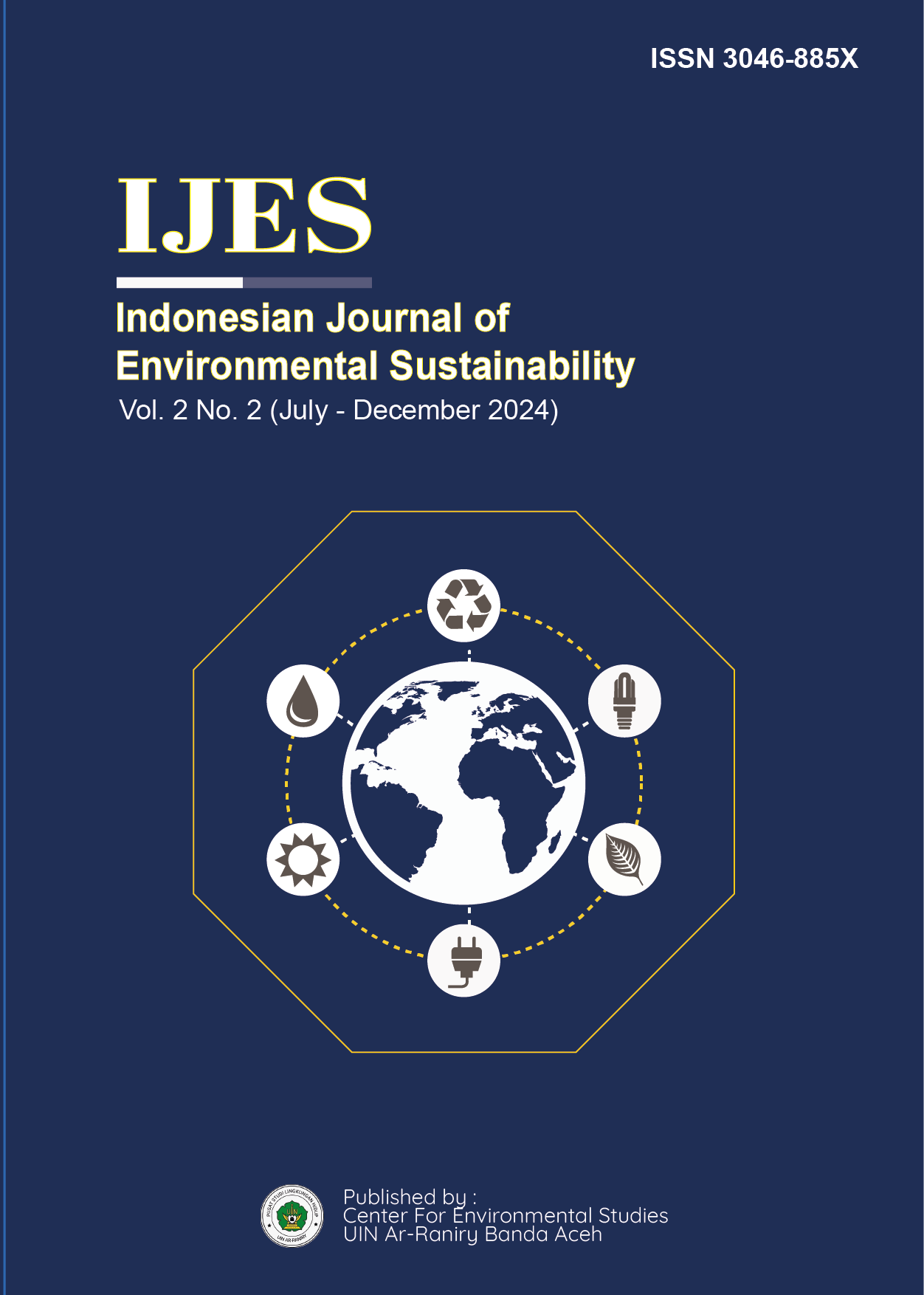THE EFFECT OF DIFFERENT CONCENTRATIONS OF RICE WASHING WATER IN THE COMPOSTING PROCESS WITH THE MAC DONALD METHOD
DOI:
https://doi.org/10.22373/ijes.v2i2.5958Abstract
One way to reduce organic waste is through composting. One composting methodhat can be used is the Mac Donald method which employs an aerobic system to place raw ingredientsn an open box-shaped container. The purpose of this experiment was to observe the object under this study (rice washing water in organic waste composting). Four compost treatments namely P0 (organic garbage and without rice washing water added); P1 (organic garbage and added rice washing water of 35 ml); P2 (organic garbage and added rice washing water of 45 ml) and P3 (organic garbage and added rice washing water of 55 ml). Temperature measurements at the end of the composting process showed that the temperature in all four containers was 29°C. The pH values obtained met maturity requirements forompost as specified by SNI 19-7030-2004, namely with a minimum value of 6.80 and a maximum of 7.49. The observation results of moisture content at the end of composting in the four containers were 40%. The best results were shown in the variation of P2 (by added rice washing water of 45 ml) with a C/N ratio of 19.31 and began to mature in week 3 with levels of C-organic, N-total, P-total and K-total of 34.00%; 1.76%; 0.49% and 1.68% respectively.
















